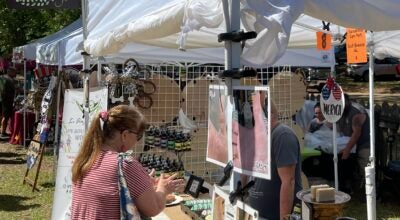Opportunity zones including, Lowndes, approved by U.S. Treasury Department, IRS
Published 11:18 am Friday, April 20, 2018
|
Getting your Trinity Audio player ready...
|
By Fred Guarino
The Lowndes Signal
Governor Kay Ivey announced on Wednesday, April 18 that Alabama’s Opportunity Zone nominations, including Lowndes County, have received full approval from the U.S. Department of the Treasury and the Internal Revenue Service.
The governor submitted the state’s census-tract nominations for the Opportunity Zones program in late March, prior to the federally imposed deadline. Alabama was one of the first states to submit census-tract nominations.
“I appreciate the quick work of the U.S. Treasury Department and the IRS to approve Alabama’s nominated Opportunity Zones,” Ivey said. “Now we can take full advantage of this valuable tool provided through the Tax Cuts and Jobs Act to attract additional industry and jobs to our great state. We selected each Opportunity Zone with care, and with an eye toward making a positive difference with the greatest possible impact.”
The zones include eastern and northern Lowndes County and are a new alternative economic development program established by Congress in the Tax Cuts and Jobs Act of 2017 to encourage long-term, private-sector investments in eligible urban and rural communities nationwide.
The program provides a federal tax incentive for investors to re-invest their unrealized capital gains into Opportunity Funds dedicated for investing in designated Opportunity Zones. The federal law authorizes governors of every U.S. state and territory to determine and nominate eligible census tracts as Opportunity Zones.
The Governor’s Office, with the help of the Alabama Department of Economic and Community Affairs, identified and selected 158 Opportunity Zones from the qualifying tracts using an objective methodology that involved input from a variety of resources to determine areas where the program could be most effective.
Governor Ivey’s directive was to include at least one Opportunity Zone in each of Alabama’s 67 counties.
The areas eligible for submission as Opportunity Zones were census tracts designated as low-income communities – meaning a poverty rate of at least 20 percent or a median family income of less than 80 percent of the statewide median income.
The selected zones were chosen from 629 qualifying census tracts. The selected tracts average between 1,200 and 8,000 in population and vary in size from 199 acres to 235,352 acres.
Jim Byard Jr., director of the Lowndes County Economic Development Commission (LCEDC) said basically, the program is designed to deploy capital gains to “distressed communities.”
He said, “The Opportunity Zone designation of a portion of eastern and northern Lowndes County will be just another tool in our economic development chest. As this program develops, Lowndes County will be ready to move forward,”
Methods used in the selection process, which began in January, included a county-by-county examination of previous designation as advantage sites or industrial sites, a review of aerial imagery for development activities by ADECA’s Geographical Information Systems Unit and data and research compiled by federal, state and local organizations.
“ADECA will continue to support Governor Ivey’s efforts to ensure Alabama uses this new program to attract private-sector investment to low-income rural and urban areas of our state through federal tax deferrals,” ADECA Director Kenneth Boswell said.
According to the U.S. Treasury Department, the qualified Opportunity Zones will retain this designation for 10 years. Investors can defer tax on any prior gains until no later than December 31, 2026, so long as the gain is reinvested in a Qualified Opportunity Fund, an investment vehicle organized to make investments in Qualified Opportunity Zones. In addition, if the investor holds the investment in the Opportunity Fund for at least 10 years, the investor would be eligible for an increase in its basis equal to the fair market value of the investment on the date that it is sold.





